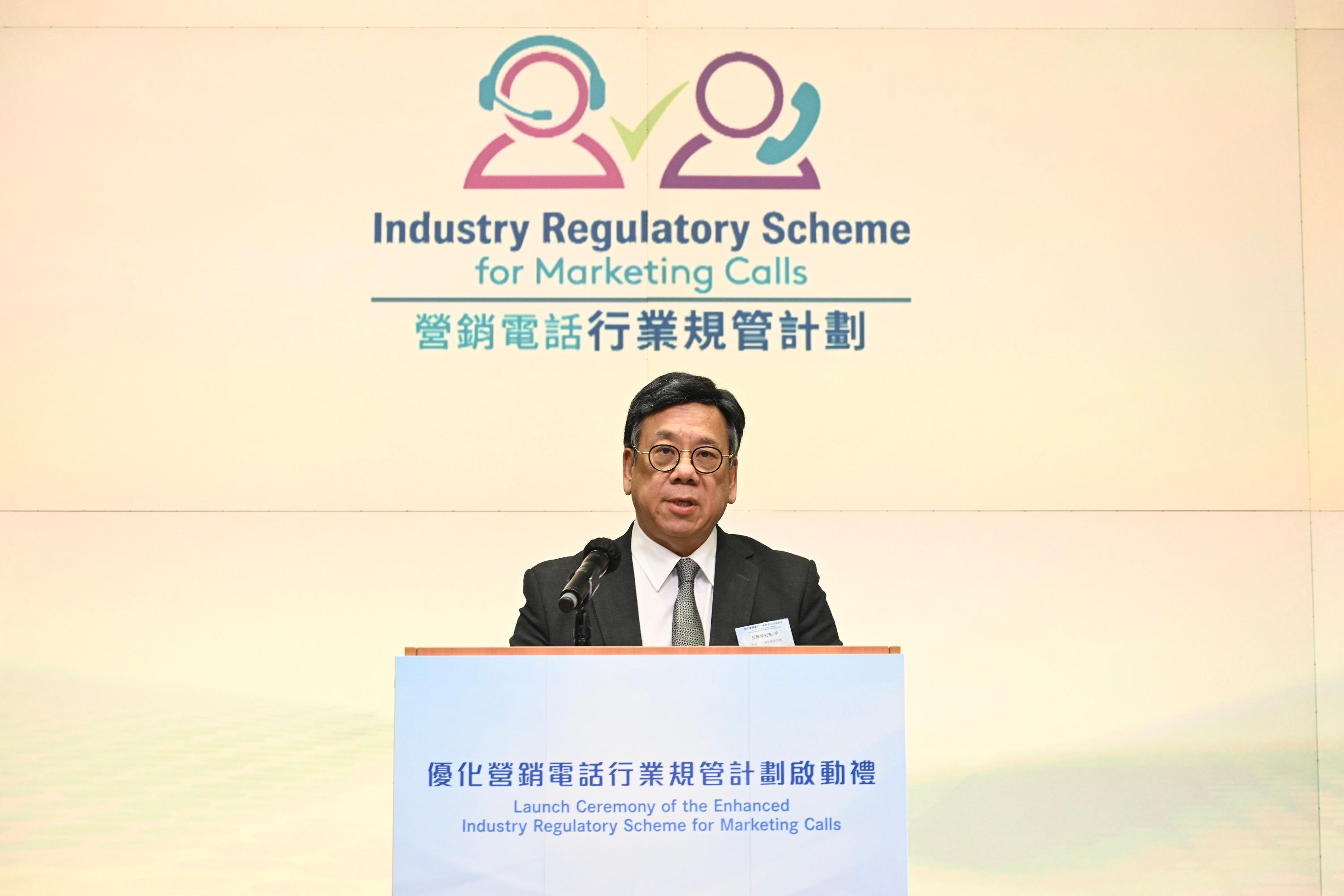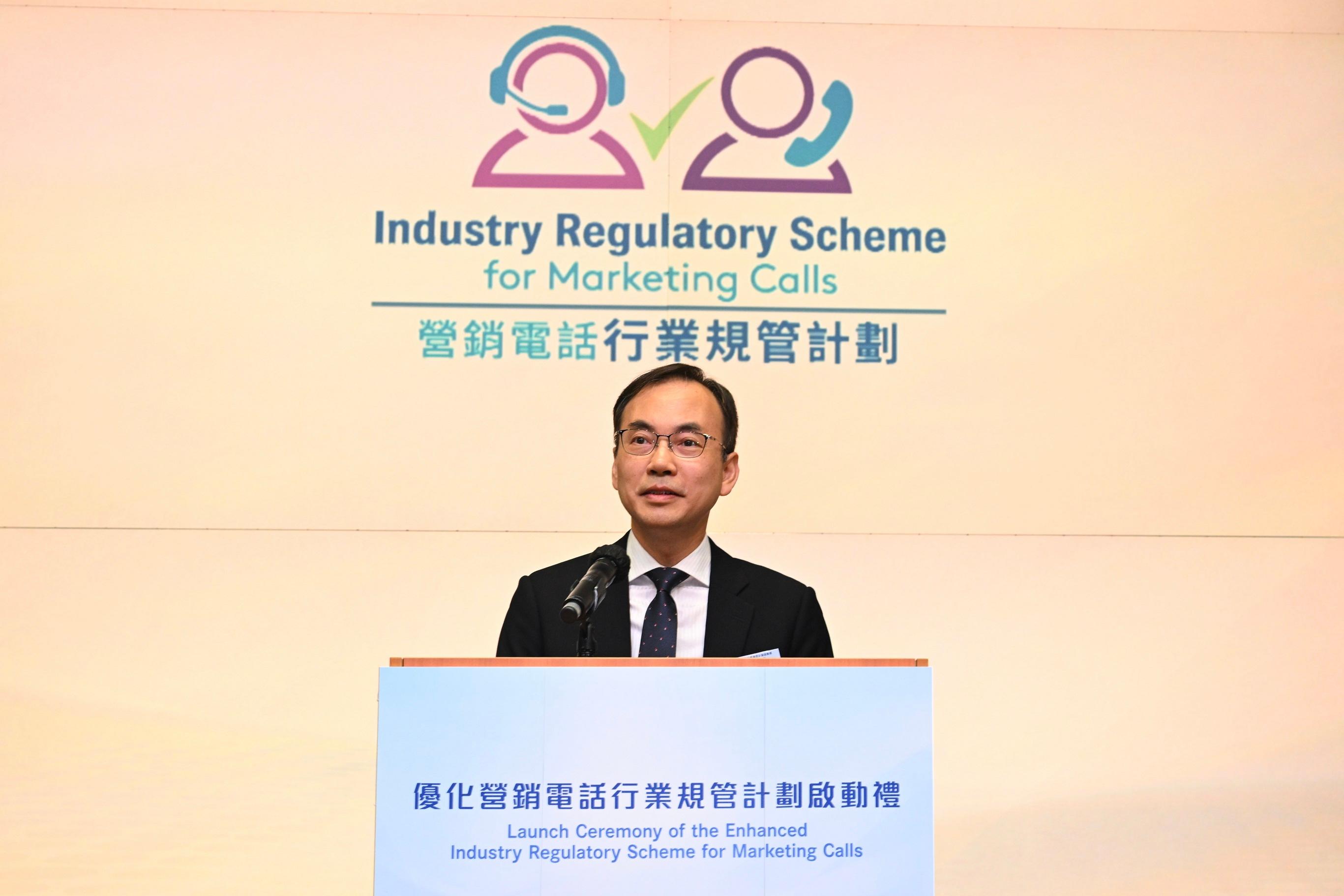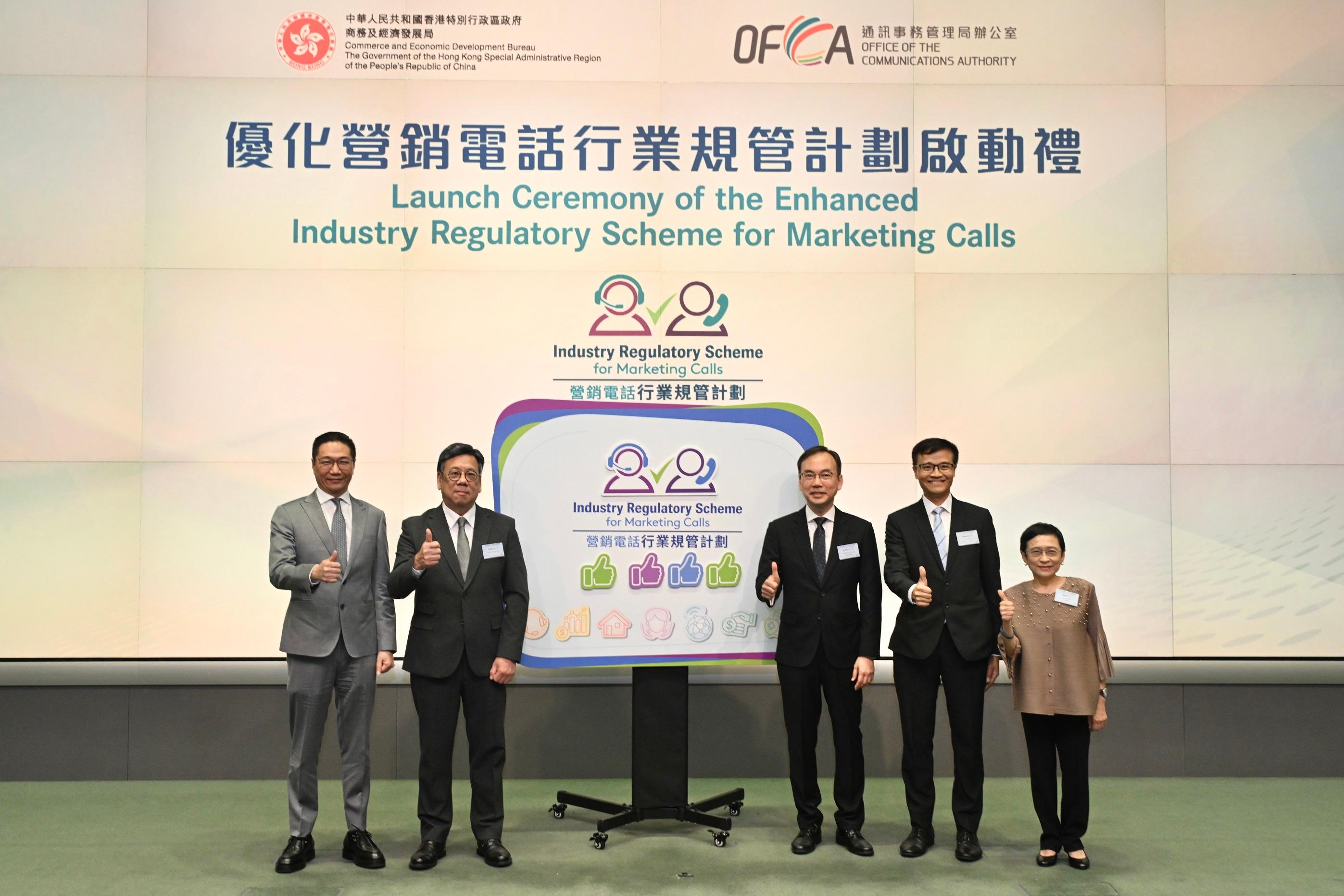Following is a question by the Hon Nixie Lam and a written reply by the Secretary for Health, Professor Lo Chung-mau, in the Legislative Council today (June 26):
Question:
In the discussion paper on “eHealth+” development submitted to the Panel on Health Services of this Council in February this year, the Government pointed out that there were a total of some six million people who had registered with the Electronic Health Record Sharing System (eHealth) last year, but the electronic health records uploaded by private healthcare institutions remained extremely low in quantity, representing less than one per cent. In addition, eligible cancer patients receiving treatment under the Hospital Authority (HA) can join the Project on Enhancing Radiological Investigation Services through Collaboration with the Private Sector (the Radi Collaboration Project), and be referred to private healthcare institutions for receiving radiological diagnostic examinations. However, quite a number of members of the public have relayed that after they undergo radiological diagnosis examinations at private healthcare institutions (e.g. private doctors, private hospitals, clinics or radiological examination centres), the relevant radiology images and medical records are not uploaded to eHealth in a timely manner, which affects their subsequent follow-up consultations in public hospitals. In this connection, will the Government inform this Council:
(1) whether it knows the usage of and waiting time for Computed Tomography, Magnetic Resonance Imaging, Ultrasonography and Positron Emission Tomography in various hospital clusters, as well as the respective numbers of patients who underwent radiological diagnosis examinations under the Radi Collaboration Project and at their own expense in each of the past five years;
(2) of the current number of private healthcare institutions which have registered to participate in eHealth;
(3) among the current electronic health records uploaded to eHealth, of the number of those uploaded by private doctors, and its proportion in the total number of electronic health records; and
(4) of the current number of eHealth users who have given “sharing consent” to private healthcare institutions for accessing and uploading their medical records, as well as its proportion in the total number of registered eHealth users; whether private healthcare institutions are currently required to upload their patients’ medical records to eHealth or HA’s Clinical Management System within a specified time limit; if so, of the details; if not, the reasons for that?
Reply:
President,
Officially launched in 2016, eHealth is a city-wide electronic health records (eHRs) sharing platform developed by the Government, enabling participating citizens to authorise healthcare providers (HCPs) in the public and private sectors to access and deposit their eHRs in eHealth. eHealth has undergone two stages of development. As of the end of May 2024, there are approximately six million registered individual users on eHealth, covering nearly 80 per cent of the total population in Hong Kong.
Building on this sound foundation, the Government announced in the Policy Address 2023 a five-year plan of eHealth+ to transform eHealth into a comprehensive healthcare information infrastructure that integrates multiple functions of healthcare data sharing, service delivery and care journey management. eHealth+ aims to bring about a more seamless and personalised care journey for each citizen, and facilitate care co-ordination, cross-sector collaboration, as well as health management and surveillance, enabling citizens to receive better healthcare services and supporting various healthcare policies more effectively. The Government will take forward eHealth+ development in accordance with four strategic directions, namely One Health Record, One Care Journey, One Digital Front Door to Empowering Tool and One Health Data Repository.
In particular, the eHRs of citizens that are spread across a multitude of healthcare processes will be consolidated into their personal eHealth accounts under the strategic direction of One Health Record. A comprehensive and complete eHR profile enables citizens and HCPs to make informed decisions and respond to the health needs of citizens more effectively, thus providing more accurate diagnoses and saving the costs of care. eHealth+ will also gradually establish a population-wide health data bank of Hong Kong people, enabling the Government to formulate more comprehensive, precise and evidence-based healthcare policies, thereby allocating resources more effectively. Besides, the dataset will support clinical research and trials, promoting Hong Kong to become a hub for medical innovation.
In consultation with the Hospital Authority (HA), the reply to the question raised by the Hon Nixie Lam is as follows:
(1) The annual service amount and waiting time for Computed Tomography (CT), Magnetic Resonance Imaging (MRI), Ultrasonography and Positron Emission Tomography in each HA’s hospital cluster and the service amount of the Project on Enhancing Radiological Investigation Services through Collaboration with the Private Sector (Radi Collaboration project) in the past five years are at Annex. The HA does not maintain the number of patients’ self-financed diagnostic check-up cases.
(2) & (3) As of the end of May 2024, all local public hospitals and clinics, 13 private hospitals, and over 3 060 private HCPs are registered on eHealth, covering more than 5 550 service locations. Of those, 86 HCPs (including private hospitals and imaging diagnostic centres) provide radiological imaging services, covering 156 service locations.
Currently, there are over 4.02 billion sharable eHRs on eHealth. The average amount of eHRs accessed by HCPs per month has steadily increased, with monthly average views over the past three months reaching 220 000. In 2023, over 60 per cent of the views were from private HCPs. Nevertheless, despite the very high participation rate of the private sector, nearly all (over 99 per cent) of the sharable eHRs on eHealth came from public HCPs. The low deposit rate of private HCPs has become a major obstacle to citizens receiving continued care.
In fact, most private HCPs already have mature IT systems, which can meet the technical and security requirements to connect their system to eHealth to deposit citizens’ health records. The Government will continue to encourage private HCPs to deposit citizens’ eHRs to eHealth through a multi-pronged approach, with a view to creating a comprehensive health record profile for every citizen.
The Government is implementing the eHealth Adoption Sponsorship Pilot Scheme by collaborating with clinical management system (CMS) solution vendors and medical groups to improve their systems, which will enable private healthcare professionals to seamlessly deposit health records to eHealth through their original CMS. The Pilot Scheme is progressing well. Around 400 private doctors have completed connection to eHealth and uploaded more than 430 000 eHRs in total as of the end of May 2024. The Government will continue to provide technical and financial support, and expand the scheme to more HCPs and professions, including Chinese medicine practitioners, medical laboratories and dental care providers, in order to promote the seamless connection between eHealth and the electronic medical management systems used in the market. Besides, 203 private HCPs (including 12 private hospitals) have already completed system connection with eHealth, covering a total of 775 service locations, including 73 locations that provide radiological imaging services.
The Government will also gradually mandate all private HCPs that participate in government-subsidised healthcare programmes to deposit medical records of citizens using the relevant services to eHealth. Taking the Radi Collaboration project as an example, eligible cancer patients receiving treatment at public hospitals can be referred to private institutions to receive CT and MRI services with all fees subsidised by the HA. The examination results must be sent to the HA’s CMS within three days, saving patients the time to return and collect their reports, and enabling their doctors at the public hospitals to formulate future treatment plans. Citizens and private HCPs participating in the project must register for eHealth and the diagnostic result will be simultaneously deposited in the eHealth system, enabling citizens and other authorised HCPs to conveniently access the relevant examination reports through the system.
Furthermore, the Government will launch the eHealth+ certification scheme to enable citizens to conveniently identify the ability of the HCPs to deposit records to eHealth and the extent of the data involved. Citizens can make reference to such information when selecting the appropriate HCPs to ensure that their medical records will be deposited in their personal eHealth account.
(4) eHealth participation is voluntary for both citizens and HCPs. Under the current mechanism, once citizens provide their “joining consent” to register for eHealth, the HA and the Department of Health can deposit and access their eHRs. As for private HCPs, other than the “joining consent”, citizens must additionally provide individual HCPs with their “sharing consent” to enable the HCPs to deposit and access their eHRs in eHealth.
The Government observes that of the nearly six million registered users on eHealth (i.e. provided their “joining consent”), nearly 70 per cent have not provided any private HCPs with their “sharing consent”, meaning that their eHRs have yet to be unlocked for sharing between the private and public sectors or among private HCPs. One of the reasons is that many citizens may not fully understand the current two-step consent mechanism. The Government plans to revise the Electronic Health Record Sharing System Ordinance (Cap. 625) (eHRSSO) to simplify the relevant sharing consent mechanism on the premise that citizens participate in eHealth voluntarily. Concurrently, the Government will continue to streamline the relevant procedures for citizens to give consent to private HCPs via publicity and facilitative measures. The Government is also planning to amend the eHRSSO to empower the Secretary for Health to require HCPs to deposit prescribed essential health data in citizens’ personal eHealth accounts with their consent, in order to protect citizens’ right to access and manage their personal health records. read more





